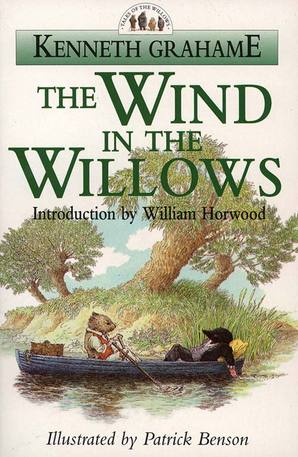Inspiring Young Readers
 posted on 19 Nov 2015
posted on 19 Nov 2015
The Wind In The Willows by Kenneth Grahame
There are some books that have entered the culture at such a fundamental level that everyone thinks they know them; they may even believe they’ve read them when the truth is that they haven’t. The Wind In The Willows is most definitely one of these. The adventures of Ratty, Mole, Badger and Toad have been the subject of so many plays, films, television programmes, story recordings and Bowdlerised retellings that most people will have some idea of the Riverside, the wise old Badger and the reckless Toad’s love of motor cars. Phrases like ‘messing about on the river’ and ‘the wild wood’ are common currency and one of the chapter headings – ‘Piper At The Gates Of Dawn’ – provided a title for Pink Floyd’s second album released in 1967.
Until now, I was one of the many who had never actually read the book. Having just finished it I can say with the authority of personal experience that this book is far more exceptional and extraordinary than even its reputation suggests. In many ways the central tale of the animals that populate the riverside and wild wood is the least remarkable aspect of this story . Toad’s infatuations with the latest fashions and his brushes with disaster provides plenty of entertainment – it’s funny, fast paced and engaging for the younger reader – but, for me, it’s really the secondary aspect of a much more ambitious, much bigger work.
What Grahame does with consummate skill is to create a world that is both real and unreal, that exists in time and outside time. He allows us to have an almost mystical communion with the rhythms of nature and his deceptively simple and straight-forward prose style evokes the deep chills of winter and the hazy lazy days of summer. We get to experience what it feels like to be suspended in that sublime moment of well-being and to witness the power of friendship and the closeness of trust. It is a world of sympathy and concern for your fellows, where the problems of the individual are shared by the wider community.
In addition, Grahame’s book is a meditation on childhood and the kind of world we want children to grow up in. The adult world joins together to protect the young and potentially vulnerable and the ‘Piper At The Gate’s Of Dawn’ chapter tells the tale of how the animals join together to find Portly, the missing child of the Otter colony. This incident is essentially a springboard for a more philosophical, even mystical, vision of what the world feels like to children at the start of their lives – the dawn of their days - when they are welcomed to the world and protected by the goat-god Pan who, to protect them, removes from them all memory of the encounter.
This essentially Pagan celebration of nature, showing birth and a childhood lived in communion with the natural life, takes this book to a different place and makes it something special. Grahame has been widely criticised for these more spiritual elements of his book but I see them as both fully integrated and essential to his world-view. When we do revert to the story of Toad, Mole, Ratty and Badger and cheer them on in their battle against the weasels we know that, ultimately, this book isn’t about their temporal travails – however important that seems to them in that moment - but about the eternal verities and what it really means to be alive.
Terry Potter
November 2015